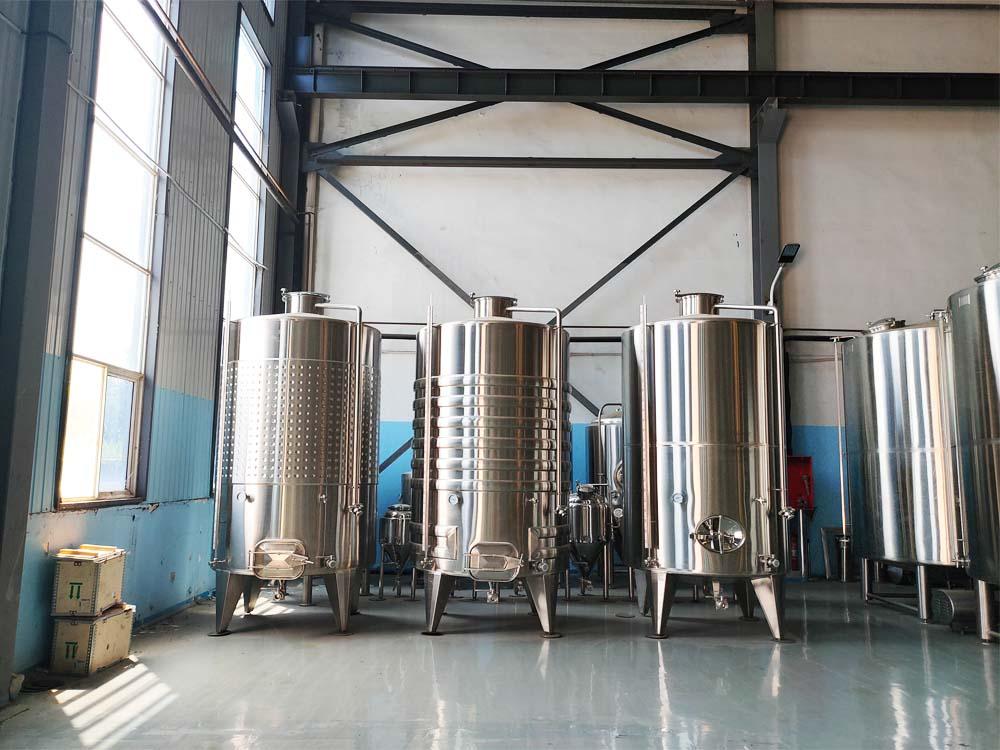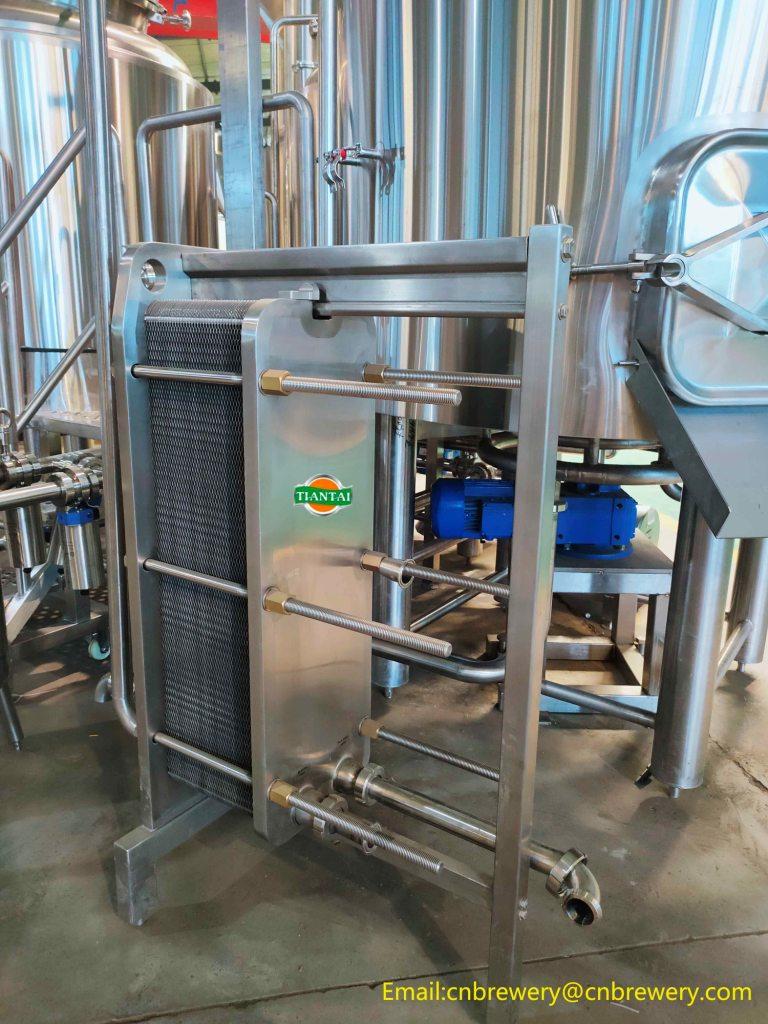The Ginger Beer Brewing Process Explained Step-by-Step
- Jun 07, 2025
- 139
- tiantai
Ginger beer is a naturally fermented, slightly spicy, and lightly carbonated beverage that’s gaining popularity across the globe — both as a standalone drink and a cocktail mixer. Unlike traditional beer, it’s made without malt or hops and instead relies on ginger, sugar, and yeast. Whether you're a home brewer scaling up or a beverage company planning commercial production, understanding the ginger beer brewing process is key to consistency and flavour control.
Let’s break down each stage of the process.
Step 1: Ingredient Preparation
The base ingredients for ginger beer are:
-Fresh ginger root or ginger powder
-Sugar (white, brown, or syrup)
-Lemon or lime juice
-Water
-Yeast (brewer’s yeast or champagne yeast)
Optional ingredients include spices (like cinnamon or cloves) and natural flavour extracts depending on your recipe.
Step 2: Boiling and Extraction
In this stage, flavour and sugar are extracted to create the wort (liquid base):
Cut or grate ginger to expose more surface area.
Combine ginger, water, sugar, and lemon juice in a boiling kettle.
Bring the mixture to a boil and simmer for 20–30 minutes.
Add any spices towards the end for a richer aroma.
This process not only extracts flavours but also sterilises the mixture.

Step 3: Cooling
Once boiling is complete, the liquid must be cooled to fermentation temperature (around 20–25°C). This is typically done using:
A plate heat exchanger in commercial setups
An ice bath or immersion chiller in smaller operations
Rapid cooling prevents contamination and helps preserve aromatic compounds.
Step 4: Fermentation
Now the actual brewing begins.
Transfer the cooled liquid into a fermentation tank or fermenter.
Add activated yeast and seal the vessel with an airlock or pressure valve.
Maintain fermentation at 20–25°C for 2 to 7 days, depending on your target alcohol level and taste.
During this time, the yeast converts sugars into alcohol and natural carbon dioxide. You’ll see bubbling activity — a good sign that fermentation is active.
Step 5: Secondary Fermentation / Carbonation
There are two main ways to carbonate ginger beer:
A. Natural carbonation
Add a small amount of sugar before bottling.
Seal the bottles and store at room temperature for 3–7 days.
CO₂ builds up inside the bottle — creating that fizzy sensation.
B. Forced carbonation
Chill the beverage in a bright tank.
Inject CO₂ using a carbonation stone.
The latter method is more suitable for commercial production due to better control and speed.
Step 6: Conditioning and Packaging
After fermentation, the drink should be conditioned to stabilise flavour and settle yeast:
Store the ginger beer at low temperature (1–4°C) for 2–5 days.
Optional: filter to reduce cloudiness.
Then, bottle, can, or keg the drink using appropriate filling machines. Ensure proper hygiene during packaging to avoid contamination.
Step 7: Optional Pasteurisation
If you’re not using preservatives and want a longer shelf life, pasteurisation is recommended:
Heat the filled bottles to 60–70°C for a short time.
Then rapidly cool them to prevent further fermentation.
This is especially important for export markets and retail chains.
Final Thoughts
While ginger beer seems simple, each step in the process affects the final taste, fizz, and shelf life. Whether you use traditional fermentation or a more industrialised setup, having the right knowledge — and equipment — makes all the difference.
If you're planning to scale up ginger beer production, make sure your brewing system supports:
-Precise temperature control
-Efficient fermentation
-Clean-in-place (CIP) capabilities
-Safe and hygienic bottling
Contact Nicole now to customize your ginger beer brewing equipment now, Cheers!
Edited by Nicole
Sales manager | Tiantai beer equipment
Email: [email protected]
Let’s break down each stage of the process.
Step 1: Ingredient Preparation
The base ingredients for ginger beer are:
-Fresh ginger root or ginger powder
-Sugar (white, brown, or syrup)
-Lemon or lime juice
-Water
-Yeast (brewer’s yeast or champagne yeast)
Optional ingredients include spices (like cinnamon or cloves) and natural flavour extracts depending on your recipe.
Step 2: Boiling and Extraction
In this stage, flavour and sugar are extracted to create the wort (liquid base):
Cut or grate ginger to expose more surface area.
Combine ginger, water, sugar, and lemon juice in a boiling kettle.
Bring the mixture to a boil and simmer for 20–30 minutes.
Add any spices towards the end for a richer aroma.
This process not only extracts flavours but also sterilises the mixture.

Step 3: Cooling
Once boiling is complete, the liquid must be cooled to fermentation temperature (around 20–25°C). This is typically done using:
A plate heat exchanger in commercial setups
An ice bath or immersion chiller in smaller operations
Rapid cooling prevents contamination and helps preserve aromatic compounds.
Step 4: Fermentation
Now the actual brewing begins.
Transfer the cooled liquid into a fermentation tank or fermenter.
Add activated yeast and seal the vessel with an airlock or pressure valve.
Maintain fermentation at 20–25°C for 2 to 7 days, depending on your target alcohol level and taste.
During this time, the yeast converts sugars into alcohol and natural carbon dioxide. You’ll see bubbling activity — a good sign that fermentation is active.
Step 5: Secondary Fermentation / Carbonation
There are two main ways to carbonate ginger beer:
A. Natural carbonation
Add a small amount of sugar before bottling.
Seal the bottles and store at room temperature for 3–7 days.
CO₂ builds up inside the bottle — creating that fizzy sensation.
B. Forced carbonation
Chill the beverage in a bright tank.
Inject CO₂ using a carbonation stone.
The latter method is more suitable for commercial production due to better control and speed.
Step 6: Conditioning and Packaging
After fermentation, the drink should be conditioned to stabilise flavour and settle yeast:
Store the ginger beer at low temperature (1–4°C) for 2–5 days.
Optional: filter to reduce cloudiness.
Then, bottle, can, or keg the drink using appropriate filling machines. Ensure proper hygiene during packaging to avoid contamination.
Step 7: Optional Pasteurisation
If you’re not using preservatives and want a longer shelf life, pasteurisation is recommended:
Heat the filled bottles to 60–70°C for a short time.
Then rapidly cool them to prevent further fermentation.
This is especially important for export markets and retail chains.
Final Thoughts
While ginger beer seems simple, each step in the process affects the final taste, fizz, and shelf life. Whether you use traditional fermentation or a more industrialised setup, having the right knowledge — and equipment — makes all the difference.
If you're planning to scale up ginger beer production, make sure your brewing system supports:
-Precise temperature control
-Efficient fermentation
-Clean-in-place (CIP) capabilities
-Safe and hygienic bottling
Contact Nicole now to customize your ginger beer brewing equipment now, Cheers!
Edited by Nicole
Sales manager | Tiantai beer equipment
Email: [email protected]


.jpg)

.jpg)